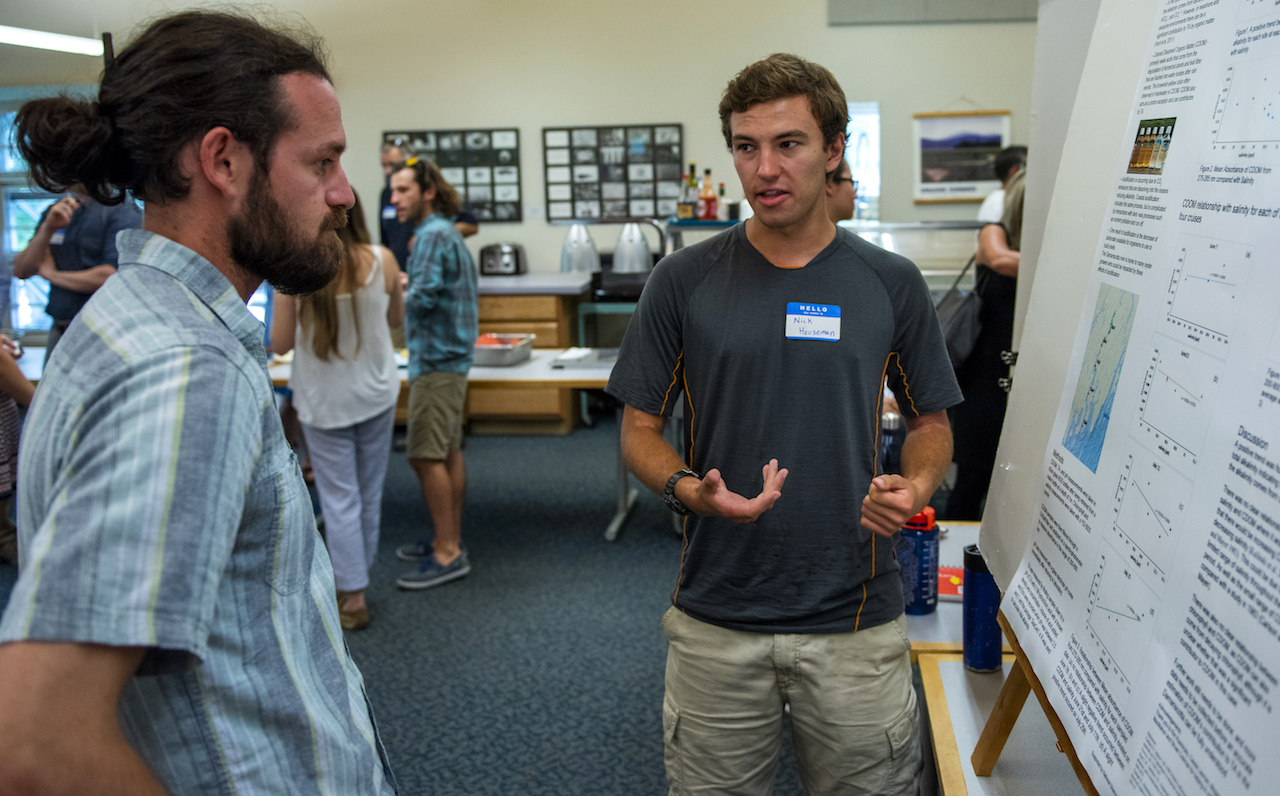
Undergraduate research for Maine’s marine economy
Diatoms, sugar kelp, green crabs, lobsters and oysters are iconic organisms on our coast. Their roles in marine ecosystems, their importance as fished and cultured species and their responses to changing ocean conditions were topics of SEA Fellows’ research from Casco Bay to Eastport this summer.
The third annual SEA Fellows Symposium featured the work of 22 undergraduate students. The August event was held at the University of Maine Darling Marine Center in Walpole and was attended by more than 80 scientists, industry professionals, resource managers and interested citizens.
SEA (Science for Economic Impact and Application) Fellows is an undergraduate research and engagement training program that supports research related to Maine’s marine economy, as well as the ecosystems and coastal communities that support it.
“We want students to experience research as it develops and to be part of the process of discovery. They learn to ask questions that resonate both from a scientific perspective as well as from a practical perspective,” said Heather Leslie, director of the Darling Marine Center and Libra Associate Professor in the School of Marine Sciences.
Dory Freeman, an undergraduate at Union College, NY, worked in Jeremy Rich’s microbial ecology lab at the DMC. Rich is an assistant professor at UMaine’s School of Marine Sciences. Freeman identified microscopic algae called diatoms in sediment samples collected in the Damariscotta River estuary. Her research was part of the Rich lab’s ongoing effort to quantify how diatoms and other microbes control levels of biologically available nitrogen in marine ecosystems. This form of nitrogen is a necessary nutrient for organisms at the base of the food chain, and ultimately controls the productivity of fisheries and shellfish farms. Freeman’s research focused on the diversity and abundance of diatoms in the Damariscotta.
What’s the best way to decrease the impact of the invasive European green crab? Create a fishery, perhaps. Two years ago, Marissa McMahan, a senior fisheries scientist at Manomet, and fishermen in the midcoast area started to collaborate on the idea. This summer Emma Ober, an undergraduate student at College of the Atlantic, joined the effort. Working at the DMC with McMahon and Rachel Lasley-Rasher, assistant professor of biology at the University of Southern Maine, Ober sampled crabs from the Damariscotta River estuary to gather population data and monitor seasonal molting patterns, key factors in determining the opportune harvesting period for soft-shell crabs.
Leslie co-founded the SEA Fellows Program two years ago with Brian Beal, professor of marine sciences at the University of Maine at Machias. Their joint vision was the beginning of what is now a multi-institutional collaborative supported by Darling Marine Center and the Downeast Institute, University of Maine at Machias’ marine field station. Additional support of the program has come from a National Science Foundation award to Maine EPSCoR, the University of Maine System Research Reinvestment Fund, and grants led by individual collaborating faculty and external mentors.
Founded in 1965, the Darling Marine Center’s mission is to connect people to the ocean. The center’s researchers, staff and students work alongside fishermen, aquaculture entrepreneurs, marine industry professionals and other members of the community in Maine and around the world. More information about the DMC, the SEA Fellows program and abstracts from the 2018 symposium is available at dmc.umaine.edu.
Contact: Linda Healy, lhealy@maine.edu
